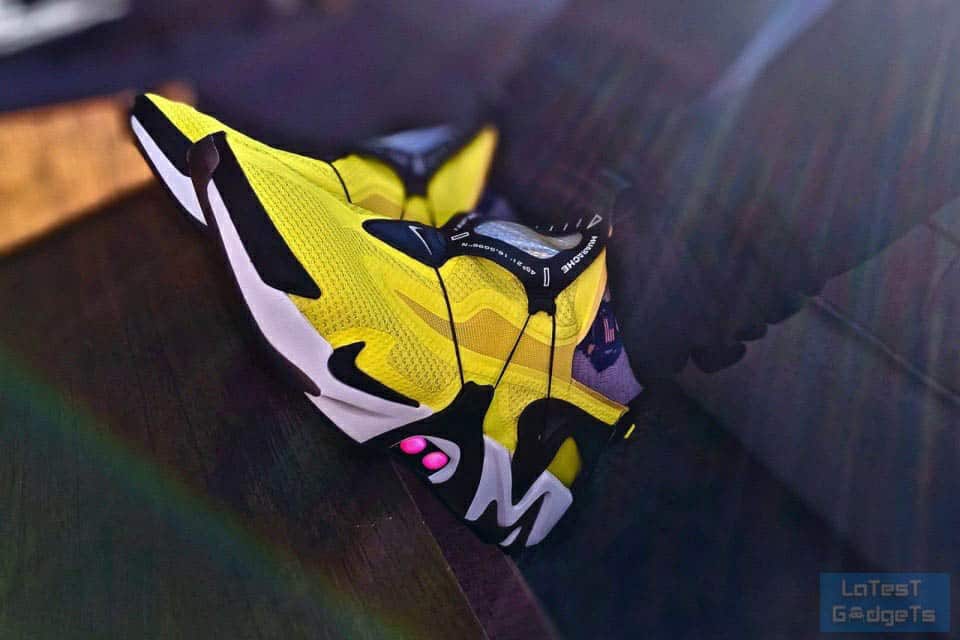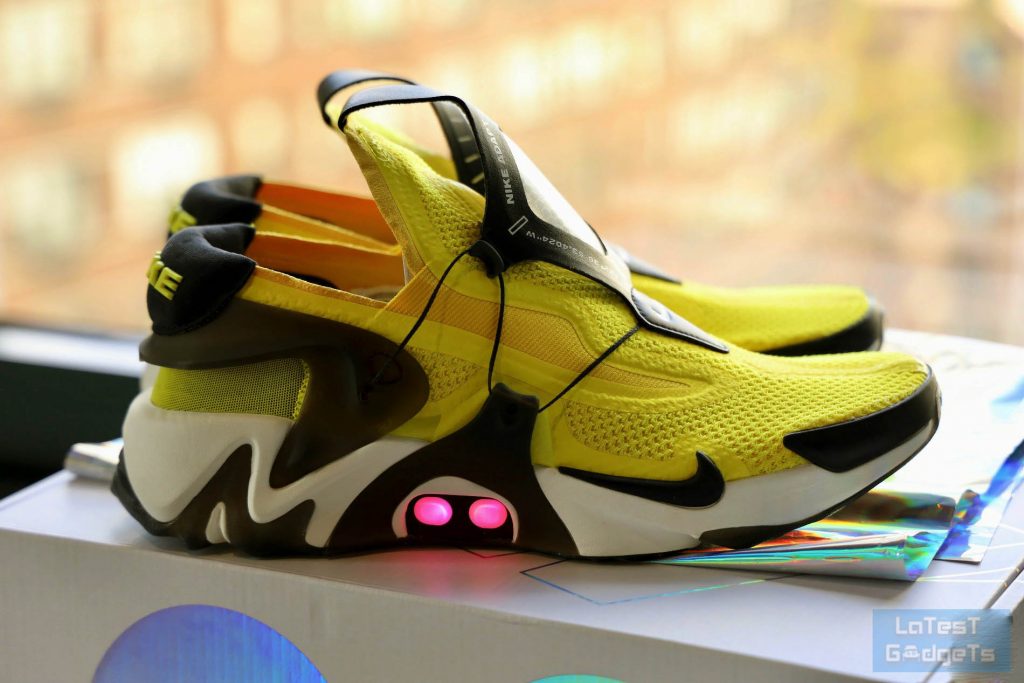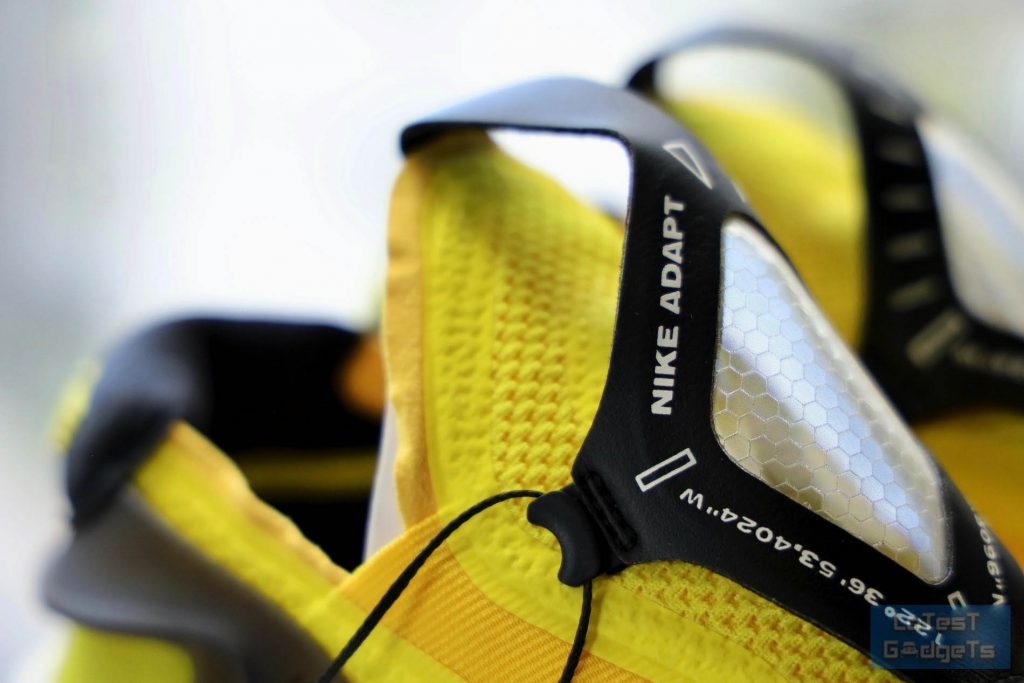There is a popular list of gadget tech that has been inspired by Back to the Future 2. Just to name a few, hoverboards, flying cars, and now self-lacing sneakers are available for public consumption. Yep, you got it right, in the names of the venerable Marty Mc Fly, “Power laces, all right!” Nike isn’t a newcomer when it comes to self-sneakers as it introduced Adapt BB with power laces in the first half of 2019. Nike’s Adapt Huarache is the second entrant using FitAdapt self-lacing technology. The new version is a recreation of the 1991 classic lifestyle sneaker costing $350 (and it is already sold out). This price tag may seem costly but is half the price of Nike’s first-ever venture into self-lacing sneakers i.e. HyperAdapt 1.0.

The original Nike Huarache released in 1991 and was designed by Tinker Hatfield. An exoskeletal upper and all-new neoprene bootie were key features in that version. The newly design structure instigated advertising trends like “Have you hugged your fit today?” The FitAdapt technology combined with Huarache’s original design is planned to kick a new line of self-lacing sneaker technology.

Previously Adapt BB was a decent foray into the self-lacing technology as it combined technology and sneakers, a sports enthusiast’s dream. However, since it was primarily a performance basketball footwear, they are bulky and not perfect for everyday use. Nike Mags 2016, the adaptation from Back to the Future 2’s self-lacing is probably the coolest pair of sneakers available. However, only 89 pairs saw the light of the day and a $75,000 price tag is probably not worth it. Puma’s Fit Intelligence tech devoted to self-lacing graced the stores in mid-2020 at a price of $330. Till then Adapt Huarache rules the roost and Nike’s finding it hard to keep up with demand, even for the Adapt BB variant.

The power lacing tech in Huarache is the same one featured in Adapt BB. This means users can engage in the smart wearing tech by using an Android or iOS app. Between both of them, the Apple version works better on the new iPhone 11 range. Voice commands are used to control the sneakers in five different ways. Siri shortcuts enable users to check the battery, adjust the laces, and switch on the lights. Simple voice commands like, “switch my sneaker lights” or “check my sneaker batteries,” get the job done. The Apple Watch can be used to loosen or tighten the fit from the comfort of your wrist. This is useful if you don’t feel like touching the 2 physical LED buttons on the sneakers. This still feels like a scene from a sci-fi movie and very soon we will be use commands like ‘Suit up…’

The voice commands don’t stop there and you can use the Adapt app to adjust the fit of the right or left shoe, process software update on the sneakers, and changing the color of LED lights. This doesn’t mean that the shoes only rely on digital signals and voice commands. The inbuilt technology enables the sneakers to automatically adjust the fit of each shoe using sensory technology. Any additional changes can be processed through the app or shoe buttons. At this point, it’s important to recognize Nike’s efforts as the voice commands were developed after Adapt BB’s launch in January.

Coming to the battery life, Nile claims that the accompanying QI wireless charging mat enables the shoes to last 14 days on a single charge. The remaining battery life can be learned by asking Siri or using the Adapt app. The tech embedded in these sneakers might raise concerns about the weight, but the sneakers are comparatively light and don’t weigh more than the popular Air Jordans.
YOU MAY LIKE: Thinking of Buying A Gaming Laptop? You Need To Check This Guide
Some readers might be wondering why users don’t tie the laces themselves and why fork out $350 for a pair of sneakers. The first question is answered by understanding the potential uses for people with disabilities and limited motor skills. The voice commands and Siri’s assistance makes this assistance worthwhile. Nike has shied from using this feature as a marketing gimmick, but future use for the disabled and elderly is imaginable. The price itself isn’t that big an issue because it’s still early days in technological development (plus, they were already sold out the moment they were launched!) and as the competition heats up we will witnessing low-cost variants.
The bright yellow color is a definite win and you get loaded tech in one easy to wear package. The future possibilities for smart wear are endless as foot injuries, walking and running issues can be targeted with sensory technology. Plus, the attraction is ever-present for the youth as actions are performed on voice commands, with charging required only twice a month. We are gradually evolving towards a tech-driven world, therefore in five years similar technology will be competing in the mainstream market at affordable prices. One shudders to think how the market will expand once Chinese manufacturers come to the party.
Do let us know in the comments below what you think of these shoes, and if you have seen these, Puma’s or any other alternate?
























